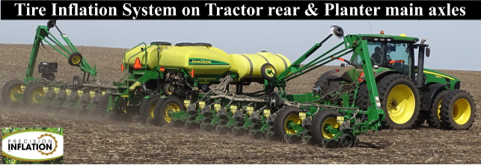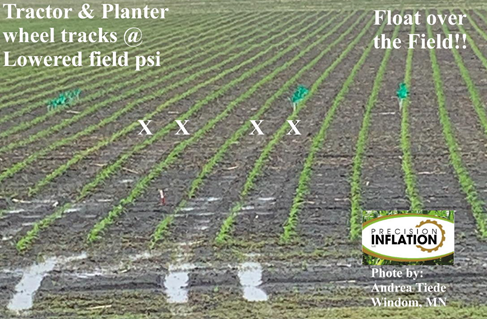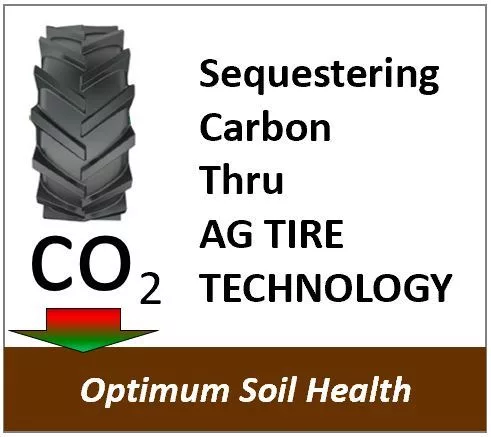CARBON Sequestration/Reduction
How can proper tire selection and air pressure improve carbon sequestration, and what specific products and practices can make the biggest difference in regenerative agriculture?
AG Tire Talk Takeaways:
BKT: Carbon sequestration can be quickly described as the long-term removal of carbon dioxide from the atmosphere to reverse global warming. In the carbon economy, farmers can be offered opportunities to sell carbon credits (more income) through conservation practices.
CONTINENTAL: A carbon conscious farm will keep as much organic material bonded with the soil, as possible. That means, the farmer is increasing humus content, adding high levels of compost, mixing in active soil organisms and using cover crops to increase the amount of bound carbon. These tasks can enable the next years’ crop to root deeper and grow a healthier plant.
MAXAM: The practice of plowing or tillage after the harvest is considered the most to blame for the erosion or increased emission of gases from the soil, as the tillage processes cuts or turns the soil which exposes the underlayers to the surface, and releases trapped gases.
MICHELIN: We are going to focus on the tire impact piece, increasing yield without increasing tillable acres, reduced disruption of soil, and improving fuel efficiency.
YOKOHAMA: There are two important issues when it comes to tires and soil-building farm management. First, a large footprint and the lowest appropriate inflation pressure for the load and speed are necessary for reducing soil compaction…second is resistance to damage from crop residue in no-till and reduced-till fields…
PRECISION INFLATION: How do we make tires and their machines more carbon friendly while enabling less tillage? Better Tire technology and adjusting tire pressures when loads, torque and speeds change! Using VF Technology & adjusting air pressure for the field enlarges the tire footprint, better disbursing the weight, resulting in dramatically less soil compaction- requiring minimal tillage.
TRELLEBORG: Running the correct air pressure in your tires will help with several things. #1 is the footprint. As you can see in the below thermal imaging pictures, the recommended air pressure is 15 psi. By putting too much air in your tires, this changes the tire’s footprint.
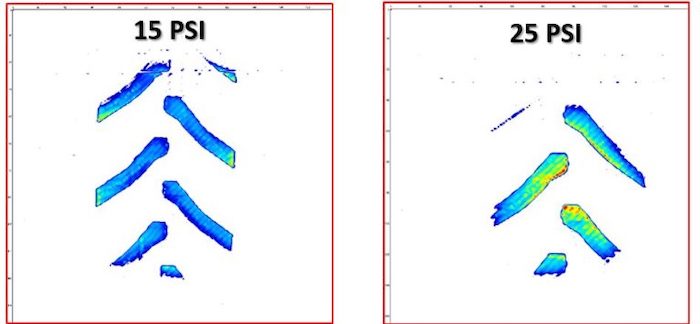
BKT USA, Inc.
Dave Paulk: Manager Field Technical Services
Carbon sequestration can be quickly described as the long-term removal of carbon dioxide from the atmosphere to reverse global warming. It can be a natural or artificial process to remove carbon dioxide from the atmosphere by converting it into solids or liquids. Some areas that can affect the removal of carbon from the air are bio sequestration, peatland, forestry, urban forestry, and wetland restoration and conservation.
In the carbon economy, farmers can be offered opportunities to sell carbon credits (more income) through conservation practices. These practices can reduce agriculture’s carbon footprint that is now estimated at creating 10% of U.S. greenhouse gas emissions. Farmers can manage their soil to increase carbon stocks. Some of the ways are to minimize soil disturbance, maximize continuous living roots, maximize biodiversity, and maximize soil cover.
In considering the above factors, no till and strip till would be the most beneficial farming practices to implement reducing the carbon footprint of agriculture.
When no till and strip till practices are used, the soil must be protected and managed for compaction. Compacting the soil in these farming practices can affect uneven water and fertilizer absorption by the soil, uneven air and spore spacing, and obstruct plant root growth for diminished yields.
Soil protection can be accomplished by running the correct air pressures on tractors and implements. Enough air must be used to carry the weight of the equipment but using too much air in tires can cause soil compaction and lead to reduced crop yields.
Using the correct tires for the application helps as the farmer can spread the weight of the equipment over a larger area with the correct air pressures.
Trelleborg Wheel Systems
Norberto Herbener: OE Applications Engineer
Carbon Sequestration
Carbon sequestration or carbon dioxide removal is the long-term removal capture or sequestration of carbon dioxide from the atmosphere to slow or reverse atmospheric pollution and to mitigate or reverse global warming.
Tractors are a huge part of farming. We build tires for tractors and combines that are used to plant and harvest the crops. Our tires can influence the time it takes to perform these operations. When a tire operates in mud, often time the tread lug voids fill up with mud and the tire starts to spin. When the tire starts to spin, it takes the farmer longer to plant or harvest the crops. This operation increases the amount of fuel which not only increases the farmer’s cost but also the amount of carbon dioxide emissions.
Correct air pressure affects traction. By having a large footprint on the soil, the tire:
- Grips better
- Less slippage
- Less time to complete your work in the field
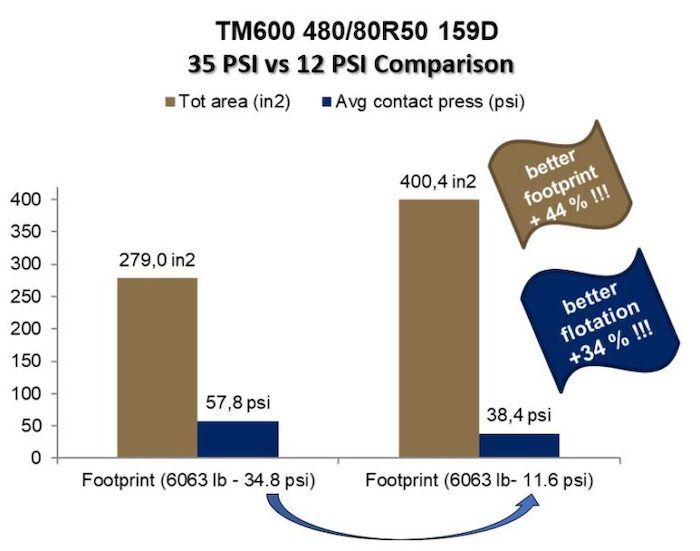
Overall benefit is the less time it takes to complete your farming work will contribute to less fuel consumption and carbon emission. Isn’t that the name of the game?
Continental Agriculture North America
Harm-Hendrik Lange: Customer Solutions Engineer for Continental Commercial Specialty Tires (CST) Let’s imagine the earth in a snow globe. In every aspect of every day, humans and animals burn, or expel fossil fuels, emitting carbon dioxide. Electricity, transportation, full-till farming, exhaling; all emit carbon dioxide – the most common greenhouse gas.
Now, think of the population in the world. Multiply it by the various activities that emit carbon dioxide and get trapped in the earth’s atmosphere; or in this example, the fluid in the snow globe, it’s mind boggling! All of a sudden, there is little space between the ‘snowflakes’ or, carbon dioxide molecules, to see the earth. Since our snow globe is pretty tightly sealed, the earth needs a way to harness the carbon dioxide molecules and utilize or store them; much like the soil absorbs the water as the snow melts. Enter, the interest in Carbon Sequestration.
Farmers always seem to be ahead of the game. They are even moving to more conservative work styles; like Strip-Till and No-Till farming. Strip-Till, is a minimal tilling of 6-8 inch narrow strips that leaves the area between the rows undisturbed. No-Till farmers, plant directly into the previous crop areas, using a no-till planter. The carbon conscious farmer we discussed earlier also uses cover crops.
As a general rule, most high aspect ratio tires, with high inflation pressure, leave an impressive track of compaction. Without extra till passes to aerate, water and nutrients will run or roll, right off. In contrast, most low aspect ratio tires with lower inflation pressures increase the footprint, minimizing impact to the soil because the weight of the equipment is more evenly distributed. Therefore, choosing equipment and tires for your farm, is a key component to success. Proper tire maintenance, selecting the right size for your equipment, as well as supporting technologies, like IF and VF, are all crucial factors to reducing soil compaction and soil destruction.
Michelin Ag
David Graden: Operational Market Manager – Agriculture
Agricultural carbon sequestration is coming at us like a freight train. At the very basic level, it seems strange that someone can create credit for intangible carbon, in the ground, then sell it to anyone willing to buy and offset their carbon production. At the same time, accurately measuring carbon that has been sequestered in our farm ground is in it’s infancy stages, and will only improve in the coming years. That all being said, it is inevitable that farmers will ultimately be strongly encouraged or even forced to comply at some point in the coming years- that’s why we must pay attention to carbon sequestration methodologies, and the agricultural tires that play such a pivotal role. We are going to focus on the tire impact piece, increasing yield without increasing tillable acres, reduced disruption of soil, and improving fuel efficiency.
In regard to increasing yield with same amount of acreage, Michelin invented Ultraflex Technologies (IF and VF) that have been independently proven to achieve up to 4.31% yield gain. This is achieved by reducing the impact farm machines have on soil. As you well know, plants simply need sun, oxygen and nutrients to grow and thrive. When we talk about reducing disruption to the soil, we specifically mean preserving those pockets of space where air and nutrients reside, so root systems don’t have to work so hard to find them. In turn, plants grow much faster and healthier to produce higher yields. Additionally, less disruption of the soil means carbon gases remain trapped in those air pockets, which provide additional nutrients for the plants. Further, due to larger tire footprint afforded by tire technology with more lugs on the ground, traction increases and fuel economy is improved.
With machines growing heavier and stronger each year, it is vitally important to choose the right tires and set the proper air pressures to carry that weight and transfer that torque, with minimal damage to the soil.
To give you some perspective as to what these combined technologies mean for soil, here is an example where a military land mine sweeper is fitted with Michelin Tires made from the casing of a Michelin Axiobib agricultural tire.
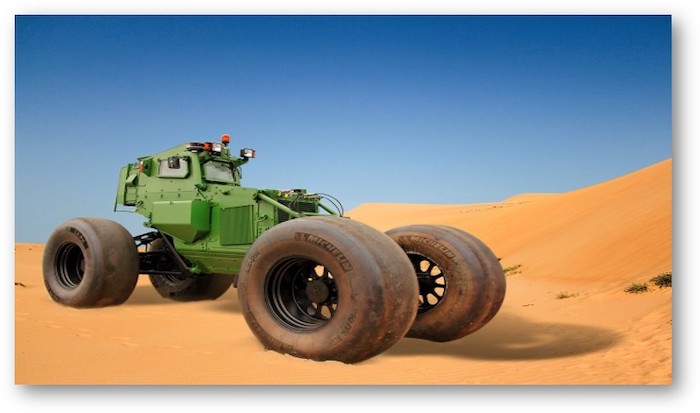
This tire, at 6 psi, on this machine, has a downward force of less than the weight of a jackrabbit. Now, think about what that would do, not only for your yields and your ability to sequester carbon, but for your pocket!
Maxam Tire International
Greg W. Gilland: Business Development & Ag Segment Manager
First, we need to understand what carbon sequestration is… The U.S. Geological Survey defines carbon sequestration as the following:
- Carbon sequestration is the process of capturing and storing atmospheric carbon dioxide.
The turning of the topsoil during plowing, planting, or fertilization mixes underground carbon-containing molecules with atmospheric oxygen, creating the gases that are emitted into our atmosphere. Some 133 billion tons of carbon, roughly a fourth of all carbon gases emitted by humanity since the early 1800s has been released from soils globally.
The challenge for agriculture going forward is how do we mitigate or reduce the impact of carbon emissions in our day-to-day farming or agricultural operations?
As discussed in our previous articles, the primary driver for increased crop results or yields is the impact of soil compaction on the plant’s ability to grow, which inevitably will create some gas emissions as the soil is compressed.
The resulting ground pressure and resulting gas emissions is directly impacted by the tires based on the below contributing factors:
- The total vehicle load per axle and number of tires
- The distribution of the load on each tire: single, dualled, or tripled per side The type of tire construction radial or bias with their corresponding ground pressure
- The tire inflation pressure per the vehicle or towed weight and resulting tire gross flat plate or otherwise known as GFP (contact surface area)
- Surface soil compaction or ground pressure leading to gas emission is mainly impacted by the tire footprint pressures (ex: the larger the footprint, the lower the pressure)
Yokohama Off-Highway Tires America
Blaine Cox: National Product Manager—Agriculture, Golf and Turf
Carbon sequestration is very important to American farmers because carbon is the key ingredient in soil organic matter—which provides nutrients and improves the structure of soil—and because sequestering carbon is emerging as a potential revenue stream for them. This is the time for farmers to position themselves to take advantage of future opportunities and be ready to stay ahead of possible regulations.
Soil health builds on itself, so a healthy soil is more able to build soil organic matter and sequester more carbon. Healthy soil has space for air and allows water to pass through, creating a good environment for the microbes that digest crop residue and roots into soil organic matter and nutrients. Creating that environment starts with reducing or eliminating tillage because tillage breaks up soil aggregates, kills the microbes and releases soil carbon into the atmosphere.
There are two important issues when it comes to tires and soil-building farm management.
First, a large footprint and the lowest appropriate inflation pressure for the load and speed are necessary for reducing soil compaction, which can damage soil structure by eliminating the pores that contain air and water. Our line of VF tires, from the Alliance Agriflex+ 354 VF radial R-1W to VF implement tires for heavy pulled equipment like air seeders and grain carts, helps reduce compaction significantly. We also design our tires to minimize rolling resistance, which lowers farmers’ carbon emissions by reducing fuel consumption.
The second is resistance to damage from crop residue in no-till and reduced-till fields—stubble resistant compound, steel-belted radials and reinforced sidewalls. Stalk stompers and other mechanical means to push down residue really help, but tires in high residue need to be able to withstand a lot of abuse, especially with the extra-stiff stalks in today’s genetics.
Precision Inflation, LLC
Ken Brodbeck, VP of Technology Can IF & VF Tires with Tire Inflation Systems Improve Soil Health?
Today’s farmers want to pass on healthier and more productive soils to the next generation. How do we maximize soil health and profitably keep carbon in the soil? Tillage practices of minimum, strip and no till are one way, along with cover crops to build soil health.How do we make tires and their machines more carbon friendly while enabling less tillage?
Answer: Better Tire technology and adjusting tire pressures when loads, torque and speeds change! Using VF Technology & adjusting air pressure for the field enlarges the tire footprint, better disbursing the weight, resulting in dramatically less soil compaction- requiring minimal tillage.
Wheel/Tire types have evolved from steel wheel to bias to radial to IF and VF radial tires. Why VF? VF Tires carry the same load at approximately 40% less air pressure, reducing soil compaction proportionally about 40%. What else can a farmer do besides invest in VF Tire Technology?
Answer: Adjust the tire pressure with a tire inflation system to lower tire pressure for lighter, low torque load conditions and HIGHER pressure for faster, heavier and high torque load conditions.
What is the result?
Dramatically improved soil health that is now suitable for No-Till or Strip-Till. Further, soil compaction in the wheel tracks, poor water infiltration after a rain, and more fuel burned to drag both the higher pressure tractor and planter tires through the field- all avoided or reduced with precision inflation management.
